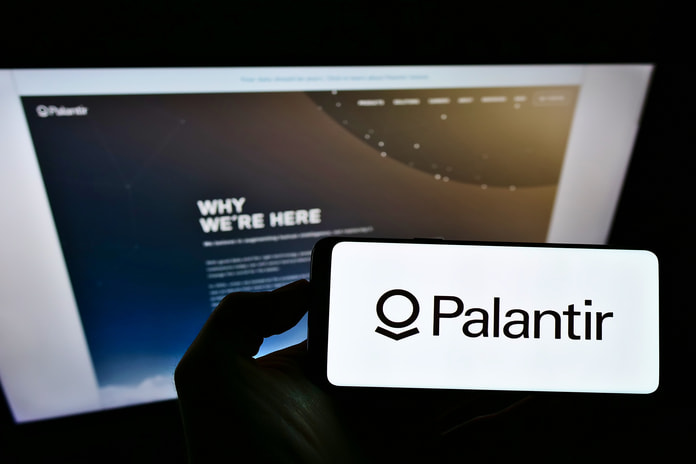Palantir (NYSE:PLTR), Palantir, Palantir… a name that nearly doesn’t need to be introduced. Palantir, co-founded by PayPal alum Peter Theil, Alex Karp, and Stephen Cohen, witnessed explosive development as it assisted Western federal agencies in digitizing. What began as a basic notion to decrease fraudulent online transactions swiftly grew into the multi billion-dollar powerhouse it is today.
The software company has long argued that its primary rival is corporate IT departments looking to develop their digital infrastructure. But what if I told you that Palantir has a competitor? And what if I told you one of those firms is a relatively unknown Polish Microcap with bigger margins than Palantir and faster growth?
That company is Datawalk, traded on the Warsaw Stock Exchange under the ticker “(WSE:DAT).” Palantir investors should keep an eye out for this newcomer on the scene.
Palantir vs Datawalk: How similar are they?
Let’s go to Datawalk’s website to learn more about what they do and why Palantir investors should pay attention. According to the website:
Datawalk employs proprietary software technology to help our customers solve tough societal problems. Our software platform is optimized for discovering patterns, correlations, and anomalies for large-scale, multi-source intelligence operations and data analysis. Datawalk reduces the constraints of data silos by combining a massively scalable big-data engine with user-friendly visual interfaces, allowing government agencies and commercial companies to swiftly integrate, access, visualize, analyze, and securely exchange data.
Data is presented not only as cells in a table, but as understandable “objects” – such as people, transactions, or events – automatically interconnected to provide our customers with a holistic view of all their data.”
Would you have noticed if I changed the word “Datawalk” to “Palantir?”
Datawalk promotes itself as a less expensive and presumably less risky alternative to Palantir. Given the volume of unfavorable stories written about Palantir, businesses and governments may see Datawalk as a way to access some of Palantir’s functionalities without creating negative news.
As evidenced by Palantir’s NHS contract, public uproar can have a negative impact on corporate performance. Datawalk has largely gone unnoticed as a foreign firm trading solely in Poland, with little institutional coverage. Compare that to Palantir, one of the most popular firms on Seeking Alpha, with extremely high trading volume and a market cap of more than $20 billion. However, Palantir investors should not disregard what I refer to as the polish threat.
One might debate the advantages of one platform over another. Still, there appears to be some overlap in their product offerings. If Datawalk can match or even approach Gotham’s strength at a lower price, Palantir may face pricing pressure.
Risks
Before I conclude and provide my final price target for these two firms, I’d want to point out a handful of concerns that investors should be aware of.
To begin, Datawalk is a pretty modest company. With a market cap that is around $200 million and revenues of less than $10 million, I would define this company as a Microcap. Microcap companies are particularly dangerous for many reasons, the most significant of which is the difficulty in obtaining data/research on the company. There are also executional risks; it’s one thing to go from $1 million to $6 million in revenue, but it’s quite another to achieve $100 million, or $1 billion in revenue.
Palantir has a significant head start, and the software business often has a winner-take-all ending. In the instance of Datawalk, I have more confidence in their capacity to execute based on contracts with significant US government agencies than I would otherwise.
The importance of interest rate expectations is the final significant issue I’d want to address in this piece. Investors expect Datawalk and Palantir, both high-growth companies, to create enormous sums of (far) future cash flow. This qualifies these enterprises as “high-duration assets,” implying that their value can fluctuate fast if interest rates shift. The Ukraine conflict, global food shortages, inflation, and mounting concerns about layoffs make forecasting interest rates even more difficult.
Conclusion
The misconception that Palantir lacks competition is a myth. In actuality, companies like Datawalk constitute an increasing threat to the former. These risks, while minor at the moment, should not be overlooked by management or shareholders.
Palantir is a “Sell” with a 1-Year Price Target of $6.26, owing to its high valuation and continuous dilution. I considered a “Strong-Sell,” but because at least one of the outcomes in my sensitivity analysis was favorable, I decided against it.
Investors in Palantir would be prudent to monitor Datawalk’s development and expansion; its early success with huge government agencies may signify things to come. If Datawalk continues to grow, it may put pricing pressure on Palantir and diminish its market dominance.
Featured Image: Megapixl © Timonschneider

















